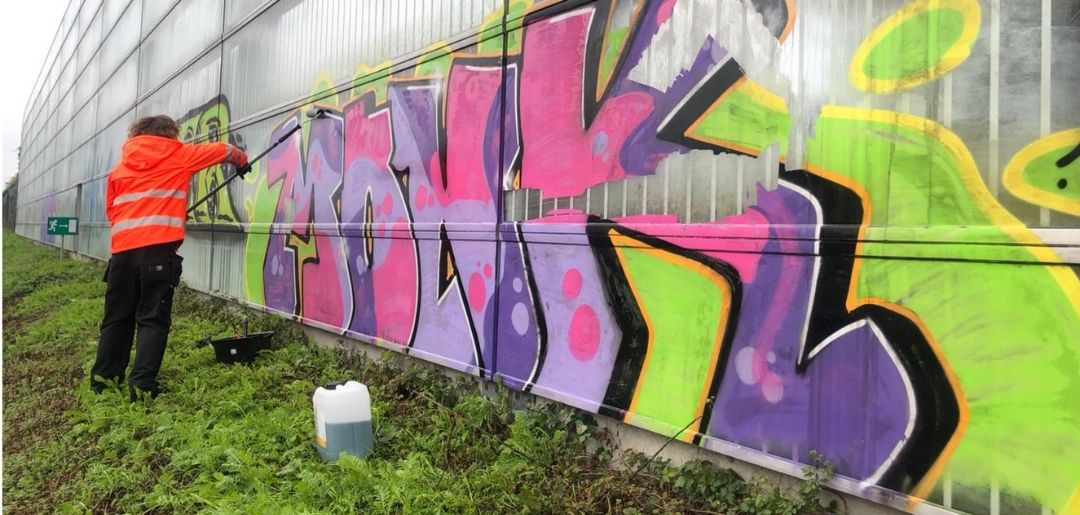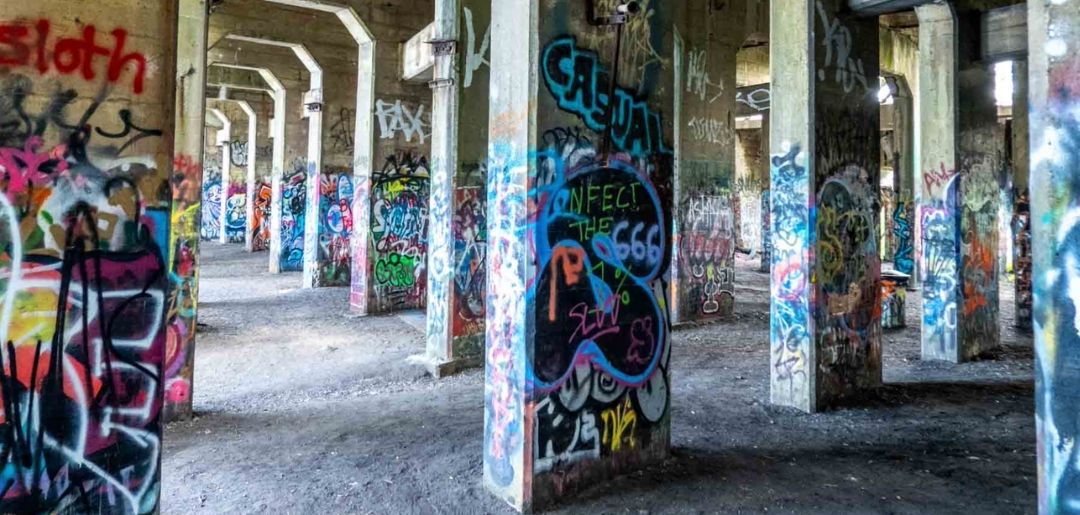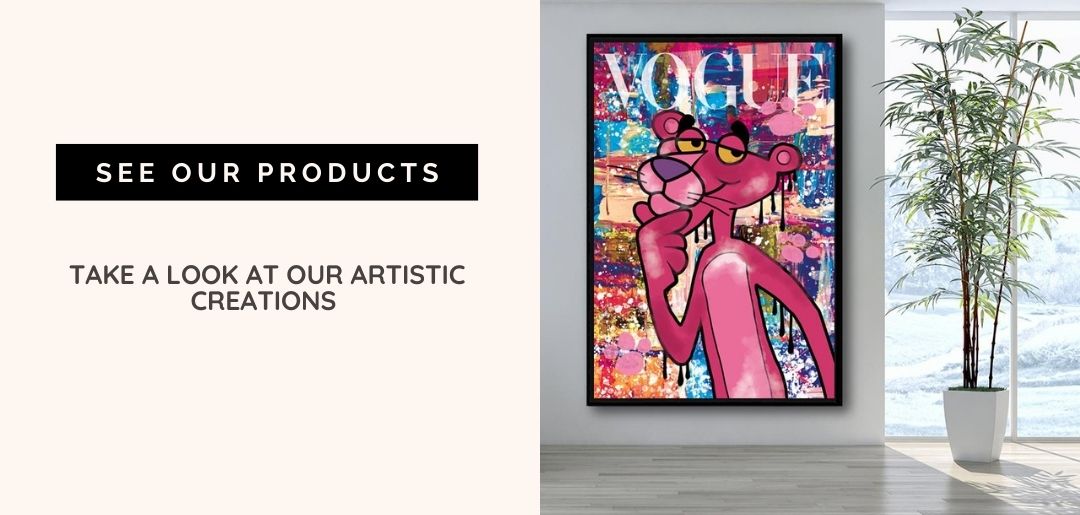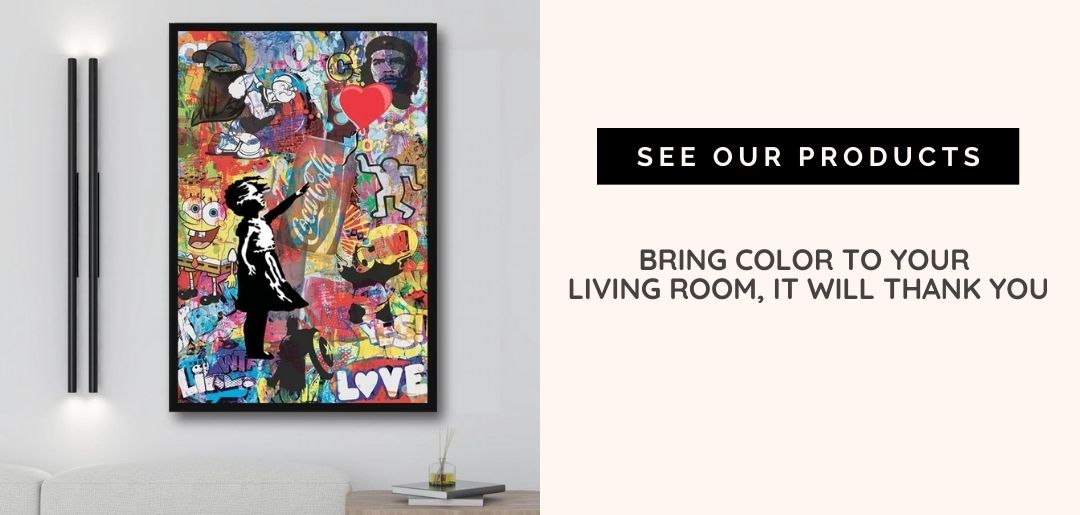
Is Graffiti Art or Vandalism ?
Are you one of those who have an unconditional fondness for graffiti art? Do you find it unique and distinct? Or, are you one of those confused about the essence of this kind of art? If yes, you probably have packed yourselves with queries that aim to accelerate your understanding of graffiti art.
Have you ever wondered if they were the result of people's creative minds or simply the result of offensive acts? Today graffiti is halfway between art and vandalism depending on how the graffiti was done.
This article will broaden your knowledge through the following covered topics:
- The start of Graffiti Art
- How society view and perceive Graffiti
- Graffiti as an Art and Expression
- Importance of Graffiti in today’s world
After completely reading this post, you can now decide whether graffiti is indeed art or just a mere vandal by a person. So, let’s stop beating around the bushes and get started.

I) The Emergence of Graffiti Art
Does the thought of how graffiti art originated ever cross your mind? How do these sketches find their way in this modern world? Graffiti didn’t merge out of anywhere and actually had a long history. Various markings have been found on different historical sites, such as in the ancient Roman ruins and the remains of the Mayan civilization.
However, it was in the mid-1960 that graffiti started to pop up. In Philadelphia, Pennsylvania, the first writers emerged, COOL EARL and CORNBREAD, who has gained the attention of the crowd through writing their names in every corner of the city. Later on, they became popular for their artistic escapades with graffiti. On the other hand, a kid with the pseudonym of TAKI 183 from Manhattan became popular in 1971, not long after CORNBREAD began the movement. Other significant graffiti writers like FRANK 207 and JULIO 204 sparked curiosity and caught the people’s attention within their communities.

Also, in the year 1971 in Brooklyn, the rise of an increasing number of writers has been observed. This occurrence is significant to the rise of the artists and the graffiti itself. The movements became unified with the subway system that paved the way for the writers to establish communication among them. There were five boroughs involved in the movement, and with their efforts exerted, an inter-borough competition was started. Like a wildfire, the writing was competitive and instantly spread on subways and in different streets. Then they discovered that writing is more convenient in train yards than on subway cars though they have taken advantage of most of them. It is unlikely for them to get caught easily in train yards and can save most of their time.

People involved in this movement wrote whatever they wanted up to the year 1974. Most of them wrote what pleased them not until they had come up with new ways to be acknowledged. One of them is making their tags unique and distinct, which birthed various writing styles. The tags were written with scripts and calligraphies, with patterns and catchy symbols. The writings were flourished with innovative styles and designs, which instantly gained recognition. Not all designs are intended to enhance the visual property of their writings, but some of them are intended to deliver messages and convey meanings. This start helped in the improvement of graffiti art, but it all doesn’t end from here.
Graffiti entered another stage of change when the tags were rendered to a larger scope. The use of spray paint cans started and helped in creating wider streams and writings. They began using thick letters to enhance the writings and decorating the insides of the letter with unique designs like checkerboards and other patterns. The larger magnum opuses are called “top-to-bottoms” with enhanced details and are wide enough to reach even the entire subway car’s height. Most of these top-to-bottoms pieces are credited to a graffiti writer from the Bronx named SUPER KOOL 223. Meanwhile, other popular writers were Japan 1, Tracy 168, Lil Hawk, Stay High 149, and many more.

Another peak of improvement was marked in the year 1975 up to 1977 when large tags became more popular. An innovative style called “throw up” was commonly used to finish large masterpieces conveniently. The bigger it gets, the more designs, techniques, and styles emerge. From 1970 to 1980, graffiti found new homes other than streets when brought to the galleries. Some of them opened their works through art galleries like Fab 5 Freddie and Lee Quinones to Italy and Rome. In the middle of the 1980s, various events for graffiti were held. There were even films and documentaries created for graffiti which helped in increasing its popularity. Some of these are Beat Street and Wild Style. When taken to other counties, graffiti became more known, and more masterpieces were created across the globe. However, it wasn’t all up for graffiti. In the 1900s and onwards, it no longer possessed the strength it had before despite being widely known. Graffiti has been diversified with the emergence of different types. Troubles are associated with it, yet you can’t stop its continuance. Some authorities intend to get rid of such masterpieces, but it holds power that not enough authority can eliminate.
In today’s world, graffiti art is still on the stair of popularity. You can walk on streets that showcase different masterpieces and be in awe of their uniqueness. Though some people are against it, they can’t stop this art form from being removed. In fact, it is sometimes a reflection of culture and expression of artists’ creativity.

II) Breaking Stereotypes: Society and its Perspective in Graffiti
Not all people view graffiti as an art bust instead of as offensive writings. Some think that most graffiti arts are gang-related but actually not. This art form is often associated with societal decay- having people and communities out of control- and mostly unlawful. Worst, the act of creating graffiti is considered a crime or deviance to some other counties. While not all graffiti artists aim to create pieces for the criminal element, there are tons of graffiti artworks that are meaningful and appealing. Most artworks made the viewers or passers-by delighted with their appearances.
Misconceptions about graffiti are present even today. Instead of being an act of expression, they think it is done by delinquents and social activists who do nothing but only to demand. Contrary to what others think, these sketches are not completely linked to character deformity. Though used as an act of expression, it doesn’t fully reflect the character of the artist but their views in society.
To fully guide you in understanding what graffiti art is, we are going de debunk some myths and misconceptions about it.
1) Graffiti art is gang-related
As mentioned earlier, this is just a hasty generalization about graffiti art and a judgmental view of its artists. One of the possible reasons is how some TV shows back then created an image about graffiti art and its artists- mostly showing gang signs. It must be noted, however, that NOT ALL graffiti art is gang-related, and if you have seen several of them, you’ll know why.
2) Graffiti art is to destroy places and someone else
Being a form of expression, graffiti sometimes becomes an avenue to call out disparities and injustices within society. Unlike what some other people think, graffiti doesn’t destroy places like train yards and empty walls but instead brightens it up by putting texts and colors which can also convey relevant messages.
3) Graffiti is messy
Some people just don’t like the combination of writings and drawings that graffiti offer. Undeniably, some masterpieces, especially the ones on a larger scale, have this messy look- vivid colors, big texts, symbols, and appealing patterns. Having its distinct style, graffiti is not messy but actually offers diversity. In an artwork, you can view different elements that add to the overall look of the graffiti.
4) It is egotistical
Not all graffiti artists or writers are into fame and notoriety – mostly, they are concerned about their passion. Egotistical as it may appear, graffiti enables individuals to participate in a collective movement of amplifying the voices about relevant issues. It is an art continuously crafted by innovators.

5) Graffiti is only about scrawling on things.
Some people are pondering that graffiti is made by kids and irresponsible adults who want only but to mess up with things. There may be thousands of graffiti writers who write on empty cracks and crevices to make the most of its spaces. But graffiti isn’t all about that. It is even brought in different mediums such as canvases, art galleries, shirts, and more.
6) There are rules governing graffiti.
One of the misconceptions about graffiti is that there are rules associated with creating it. Some groups, such as purists, nonconformists, and aerosol artists, have different points of view on the rules of graffiti. To some individuals, it only becomes graffiti when it is illegally performed. But graffiti is an artwork that is about flashing its bold letters and color on public spaces and delivering messages that are coincidentally created more often. There are no rules for graffiti but only guidelines for doing so.
Those mentioned are only some of the many conceptions about graffiti, and you probably heard some of them. It didn’t have a totally good start when looking back at its history. Some occurrences influenced how other people and societies view graffiti art. Since they have limited knowledge about this art form, they consider graffiti vandalism- a misconception we’ll clarify.
III) More than a Vandal: Graffiti as an Art and Expression
The best-known stereotype about graffiti is that it is vandalism. Though it has been widely accepted not just in many cities but across the globe, some societal groups are against with. The reasons are it is crude and vulgar and nothing but only a vandal. With its long history, graffiti is even embedded as an art culture of expression. It delivers messages of dissatisfaction, hatred, retaliation, points out injustices and disparities, and even gives warnings to people.
Also, some graffiti warn its viewers about politicians and gangs. Being associated with these people gave graffiti a reputable image that can either be good or bad. Since it is done in public spaces, issues of vandalism arise. Yet, it should be noted that not all graffiti is vandalism. It has found its spot in the world throughout the years- not only in the streets but also in people’s culture, identity, and hearts.

In this contemporary world, well-known graffiti artists create masterpieces in legal spaces. This becomes a way for them to freely express their art and convey relevant messages without the fear of getting caught. Many cities recognize graffiti as an art and accept it by giving artists spaces where they can perform their art legally. The best example of this is the Avondale Art Park in New Zealand who embraced the unique concept of graffiti. Graffiti enables artists to express themselves genuinely. They start the conversations about environmental, political, and social issues that some other people are not ready to hear or think upon.
The has always been a gap between graffiti as an art or vandalism. While not all graffiti is offensive, there are some people who find it unsightly. But such a notion won’t take away the intended message of the creator. The message will always be there once seen by the public and drew their attention. Some state that graffiti becomes vandalism when it is performed in an unauthorized private space. Hence, some artists created their own private space where they could make graffiti to raise awareness about societal issues and practices.

IV) The Importance of Graffiti in the Modern World
Graffiti doesn’t harm the public or the properties and buildings where it is written. Tons of graffiti creates positive street art that becomes a remarkable spot in the town. These spaces became a room for many artists to showcase their skills while also conveying their intended messages. Urban jungles and street art are established where people can see different types of tags.
Graffiti has two types: one is about art and creativity, while the other conveys information about other graffiti. Both types aren’t only worthy of making since they enable artists to express themselves, but it also lets viewers be impressed and get connected. Graffiti is used to spread hatred or to call out some and to showcase the love of life, reveal one’s true self, come up with new ideas, and many more. To even put graffiti in the spotlight, now we go to why graffiti is important to artists, people, and societies.

1) Graffiti is a passion
Just like any other art form, graffiti is a way for artists to express themselves. By creating graffiti, they leave parts of them that show what they feel towards things. It is both self-expression and communication that many people nowadays recognize and appreciate. Collective graffiti in public made it visual art that is appealing to the eyes.
2) Graffiti unites
Artists from different cities and countries have been brought together thanks to graffiti that let them share a common bond. Onlookers from different places also come together to witness different graffiti art in public places.
3) Graffiti brings life to public spaces
It is influential to anyone who sees it and somehow inspires and brings joy to the public. Graffiti has transformed into something more mainstream, which made society embrace it even more.
4) Graffiti is part of the culture
Having a long history, graffiti became part of and added to the culture of some countries. Graffiti can mean different things depending on how people perceive it. Graffiti also tell stories of people, of their community.
5) Graffiti awakens emotions
With what the artists have expressed with graffiti, they are able to connect with the audience by sharing the same emotion- or even other kinds. Not only does it awaken people from different issues but also their emotions and perspectives on things.
Representation of relevant themes. You can observe that some graffiti is represented with the themes of social and political issues. This has become a way for artists to exemplify their freedom of expression. It leaves powerful messages that bring awareness to the people.
In summation, graffiti, to how mostly it is viewed today, is an art that is important in many cities and countries. It enlivens empty streets, amplifies the unheard voices, and connects you to a unique art form.







